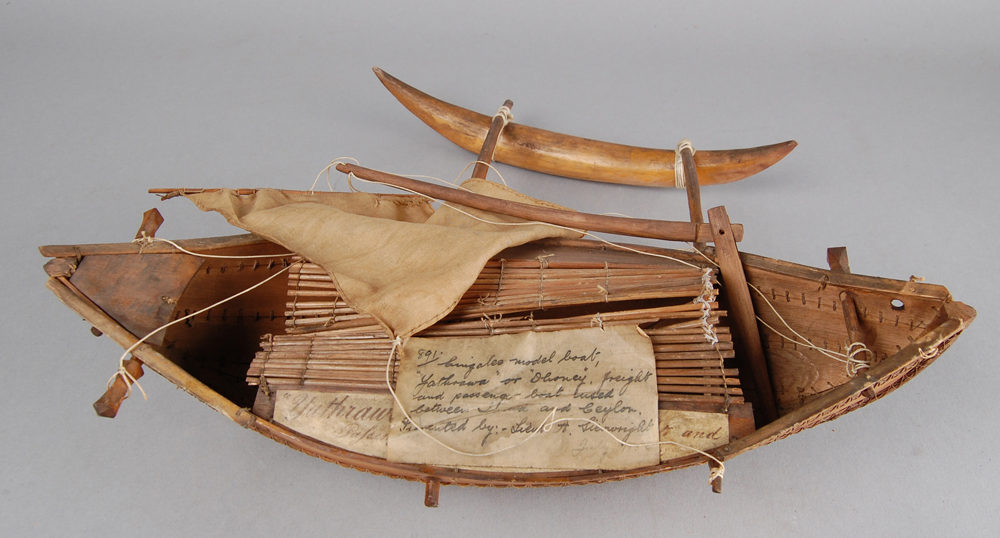Stop 15 - Model of a Yathra Dhoni
Wooden boats that were sewn together were once commonly used in Sri Lanka. Many of these contained an outrigger. This is the float you can see attached to this model which would have helped to stabilize the boat. The float would point towards the wind acting as a counter-balance, and in times of high winds the crew would stand on this device to prevent the vessel from capsizing. The force of the wind was described by the amount of men required to stabilize the boat. Today, the only outrigger vessels in use in Sri Lanka are made from manufactured fiberglass or are assembled with nylon cordage rather than traditional coconut fibre ropes. This is due to the introduction of new materials and engines, resulting in the adaptation or replacement of traditional boats. In addition, the tsunami that hit the shores of several regions around the Indian Ocean in 2004 resulted in great devastation and the loss of thousands of wooden boats in Sri Lanka. The model on display shows a trading boat called a yathra dhoni. The last of this type of boat was reported to have been wrecked off the Maldives in the 1930s. Although many traditional wooden boats around the Indian Ocean have declined or, in the case of the yathra dhoni, completely disappeared, models like this can provide valuable information about their appearance and construction. My doctoral research uses models from the Indian Ocean as a way of studying traditional boats. These objects can tell us not only about the boats themselves but can also help us to understand the maritime communities that used them.

- Next Stop
-

Stop 16 - Bark Paintings
next